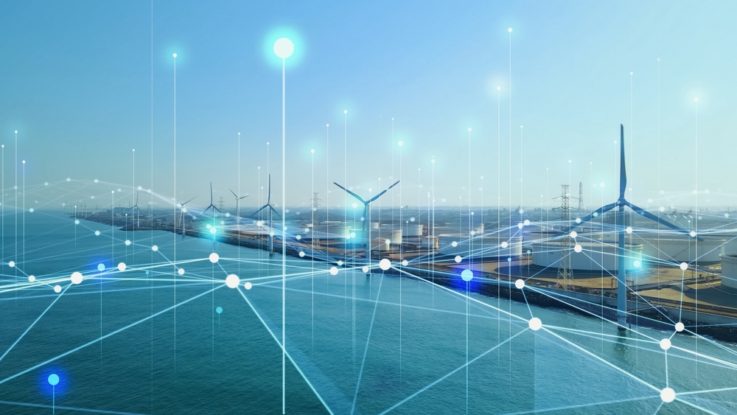
Take-aways from Distributech 2022
It is well understood that the technical foundation of smart cities depends on connectivity and power. However, integration and collaboration between these two sectors has historically been under incentivized therefore limiting the true promise of “smart”.
Heavily-regulated utilities have been slower to innovate and digitize beyond automated metering technology. And even though utility pole infrastructure is primed for IoT attachments, progress often stymies on issues concerning access, maintenance and fees.
But all of that is changing thanks to a rapidly evolving marketplace. Some of the many factors that are influencing a new integration between utilities and smart cities include a surge in electric vehicles and charging infrastructure as well as energy price volatility, the emergence of Distributed Energy Resources (DERs), a greater emphasis on renewable energy sources and resiliency efforts as well as the call for higher levels of transparency from end users.
These topics were highlighted at Distributech International 2022 (D-Tech) which took place in Dallas May 23-25. Software, data and analytics consumed as much of the speaking agenda as the more expected hardware aspects at the multi-day event.
It Sounds Like a Smart City
Many of the key messages from the conference reflected smart city themes such as how data can enable better visibility into systems management, integration and control which can deliver better resource optimization. From industry leaders to emerging entrepreneurs, speakers posited on how smart tech can help to address capacity and congestion issues, inspire greater flexibility, responsiveness and ultimately deliver value to the end customer – the citizen/resident bill payer.
As cities move forward in their smart city journey, greater collaboration with both investor owned and public utilities will become more common. George Karayannis, North American Smart Cities Lead at Honeywell, went so far as to state, “you can’t have a smart city without a smart utility.”
Better connection between municipalities and utilities can result in more seamless service delivery, especially to economically vulnerable residents. This is particularly important in times of high systems stress from environmental issues and natural disasters including drought, floods, fires, etc.
Consumers Are Driving Change
One of the more unique aspects of the conference program was the emerging influence of consumer behavior on utility modernization and digitization. Rising fuel prices are a contributing factor for greater EV demand as cities simultaneously make plans to use federal funds to bolster municipal fleet electrification and build out charging infrastructure. EV proliferation will have a combined effect. Not only will charging vehicles require massive amounts of electricity, but some like the Ford F-150® Lightning™ will also have the capacity to serve as a redundant power generator.
Introducing this two-way exchange of “Vehicle-to-Grid, Vehicle-to-Home, Vehicle-to-Load” into cities will produce a massive effect. Beyond the impact to the grid, the notion of mobilizing non-government assets (i.e. privately owned EVs) for smart city benefit (data and power generation) is a game changer. We only have to remember the importance of school buses loaded with Wi-Fi hotspots during the pandemic to realize the advantages of exploring non-traditional approaches to urban challenges. The result could be new ways to increase access and demonstrate that government can be incredibly responsive. It will require a constant shift in thinking.
What’s Next and What Will It Take?
The presentations and conversations at D-Tech confirmed that a major shift is underway and that the transition will be an evolutionary process. As a speaker explained, “after all, a smart grid is built on top of a dumb grid.”
Encouraging and enabling innovation translates to utilities investing in digitization. Amanda Ahl, Grids & Utilities Analyst with BloombergNEF explained that utility experts are making decisions on when to “buy or build” related to software and talent development. While an off the shelf solution may be more expedient, many are realizing that fostering a collaborative ecosystem yields greater rewards for the longer term as they explore the business opportunities that can come from expanding the core business or exploring new verticals.
Adding a digital layer will require examining shared risk and reward models, identifying opportunities for automation and the efficiencies from artificial intelligence, increasing cybersecurity protocols, illuminating data governance policies, developing interoperable platforms and aligning ecosystems (which is especially important for regulatory compliance) and many other factors.
Decentralization will result in new acquisitions, investments, partnerships and innovation. Like smart cities, data will be the hero of the smart utility story. Establishing an effective organization of partners and stakeholders anchored by common-sense guidelines such as device standards, data governance policies and cybersecurity protocols will be essential. Moving beyond the single-use case of smart meters to full system digitization offers a wealth of opportunities and the need for greater investment and new partnerships.
These activities can result in major steps forward in the areas of energy efficiency and better integration across local and regional smart city ecosystems. Improving power generation, distribution, and usage by way of utility digitization and smart city alignment can result in greater readiness, reliability, resilience and responsiveness.